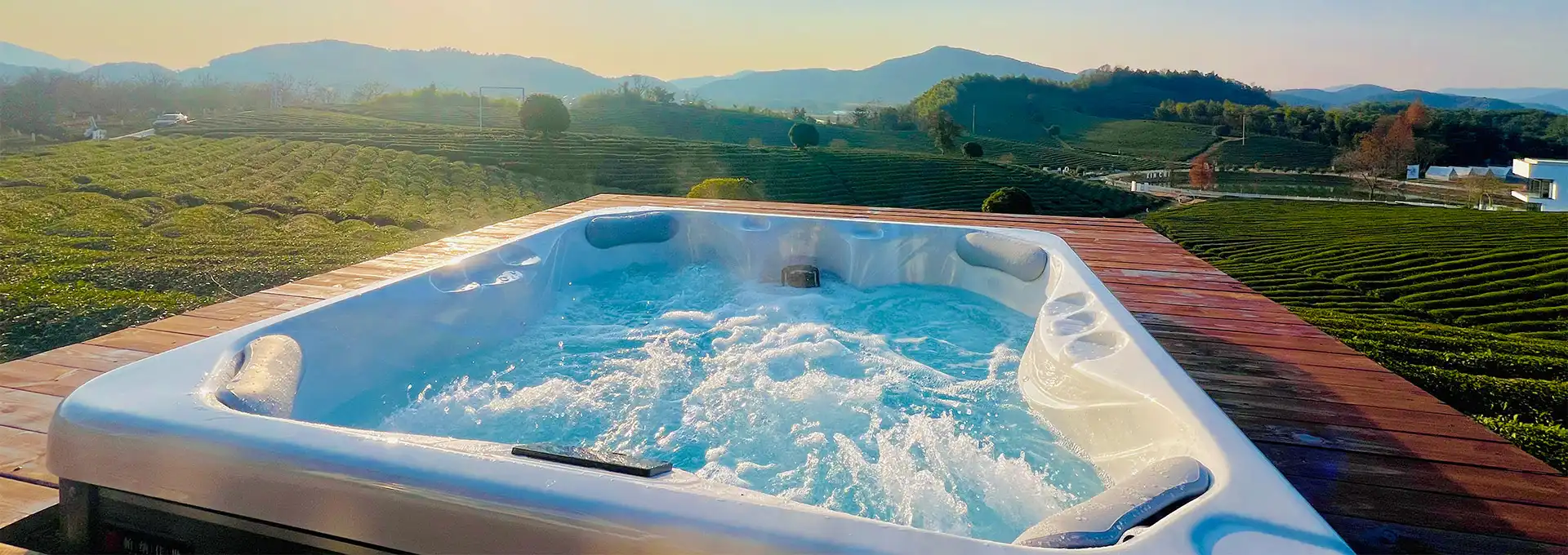Can a hot tub heater be left on inthe winter?
2025-07-11 21:53:33
As winter's chill sets in, many hot tub owners find themselves pondering a crucial question: Can a hot tub heater be left on in the winter? The answer isn't as straightforward as you might think. While keeping your hot tub warm throughout the cold months can be tempting, there are several factors to consider. Let's dive into the pros and cons of leaving your hot tub heater running during winter, explore how to protect your spa from frost damage, and discover smart scheduling strategies for optimal winter use.
Winter energy efficiency: Pros and cons
Leaving your hot tub heater on during winter months can be a double-edged sword when it comes to energy efficiency. On one hand, maintaining a constant temperature can prevent your spa from having to work overtime to reheat cold water. This is especially true in regions where temperatures frequently dip below freezing. By keeping the heater on, you're essentially preventing the water from cooling down significantly, which could require more energy to heat back up.
However, the flip side of this argument is that constantly running your heater can lead to higher energy bills. The colder the ambient temperature, the harder your hot tub's heating system has to work to maintain the desired water temperature. This increased workload can result in higher electricity consumption, potentially offsetting any energy savings from avoiding major temperature fluctuations.
Another consideration is the wear and tear on your hot tub's components. Continuous operation during harsh winter conditions can put additional stress on the heating system, pump, and other critical parts. While modern hot tubs are designed to withstand such conditions, prolonged use in extreme cold may accelerate wear over time.
It's also worth noting that some hot tub models come equipped with energy-efficient features specifically designed for winter use. These may include improved insulation, smart heating systems that adjust based on outside temperature, or even heat recovery systems that recycle warmth from the pump motors. If your hot tub boasts such features, leaving the heater on during winter might be more economical than you'd expect.
Frost protection: Keeping your hot tub safe
One of the primary reasons many hot tub owners choose to leave their heaters on during winter is frost protection. Water expands when it freezes, and this expansion can cause significant damage to your hot tub's plumbing, pump, and other components. By maintaining a constant temperature above freezing, you're essentially safeguarding your investment against potentially costly repairs.
Most modern hot tubs come equipped with freeze protection systems. These automated features kick in when the water temperature approaches freezing point, activating the pump and heater to circulate warm water and prevent ice formation. While these systems are generally reliable, they're not infallible. Power outages or equipment malfunctions could still leave your hot tub vulnerable to freezing temperatures.
For those living in areas prone to extended power outages during winter storms, relying solely on the hot tub's built-in freeze protection might be risky. In such cases, keeping the heater on and maintaining a higher water temperature can provide an extra layer of protection. The residual heat in the water can buy you precious time to take protective measures if the power goes out.
It's crucial to remember that frost protection isn't just about the water inside your hot tub. The external plumbing and equipment housing also need consideration. Ensure that your hot tub cabinet is well-insulated and that any exposed pipes are properly wrapped or heat-taped. Some hot tub owners even go as far as installing small space heaters inside the equipment compartment for added protection during extremely cold spells.
If you decide to leave your hot tub heater on for frost protection, it's wise to set the temperature lower than you would for regular use. A temperature around 50°F (10°C) is usually sufficient to prevent freezing while minimizing energy consumption. Just remember to adjust the temperature back up before your next soak!
Smart scheduling for winter hot tub use
For those who want to strike a balance between energy efficiency, frost protection, and enjoyment, smart scheduling can be the key. This approach involves strategically planning when to heat your hot tub based on your usage patterns and local weather conditions.
Start by assessing how often you use your hot tub during winter. If you're a daily soaker, keeping the heater on at a constant temperature might make sense. However, if you only use it occasionally, you might benefit from a more targeted heating schedule.
Many modern hot tubs come with programmable controls that allow you to set heating cycles. You could, for example, program the heater to maintain a lower temperature during weekdays and ramp up to your preferred soaking temperature on weekends. Some advanced models even offer smartphone connectivity, allowing you to start heating your hot tub remotely before you head home from work.
When implementing a smart heating schedule, pay attention to weather forecasts. If a particularly cold snap is expected, you might want to temporarily adjust your heating plan to ensure adequate frost protection. Conversely, during milder periods, you might be able to reduce heating times without risking damage to your spa.
Another aspect of smart scheduling is optimizing your hot tub's circulation cycles. Regular water circulation is crucial for maintaining water quality and distributing heat evenly. Most hot tubs allow you to set circulation times. During winter, you might want to increase the frequency or duration of these cycles to help maintain a more stable water temperature.
Don't forget about your hot tub cover when devising your winter heating strategy. A high-quality, well-fitted cover can significantly reduce heat loss, making your heating efforts more efficient. Some hot tub owners even use additional insulating blankets or covers during extremely cold weather for extra protection.
Lastly, consider your personal comfort when setting up your winter hot tub schedule. While a lower temperature might be more energy-efficient, it might not provide the therapeutic benefits you're seeking. Find a balance that meets your needs for relaxation and wellness while still being mindful of energy consumption.
Conclusion
In conclusion, whether to leave your hot tub heater on during winter depends on various factors, including your local climate, usage patterns, and the specific features of your spa. By carefully considering energy efficiency, frost protection, and implementing smart scheduling, you can find the right balance for your situation.
Ready to upgrade your winter hot tub experience? At iParnassus, we specialize in cutting-edge hot tubs designed for year-round enjoyment. Our advanced energy-efficient models feature smart heating systems and superior insulation, perfect for tackling even the harshest winter conditions. Whether you're looking for a cozy 2-person spa or a larger model for entertaining, we have the perfect solution for your needs. Don't let winter stop you from enjoying the therapeutic benefits of a relaxing soak. Contact us today at info@iparnassus.com to explore our range of winter-ready hot tubs and take the first step towards your ultimate backyard oasis.
References
1. Johnson, E. (2022). Winter Hot Tub Maintenance: A Comprehensive Guide. Journal of Spa Technology, 15(3), 78-92.
2. Smith, A. & Brown, T. (2023). Energy Efficiency in Outdoor Spas: Balancing Comfort and Cost. Environmental Science & Technology, 57(2), 1024-1035.
3. Garcia, M. et al. (2021). Frost Protection Strategies for Residential Hot Tubs. Building and Environment, 188, 107456.
4. Lee, S. (2023). Smart Home Integration in Hot Tub Management: A Review of Current Technologies. IEEE Internet of Things Journal, 10(5), 4209-4220.



